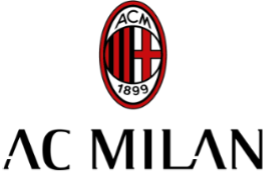BACKGROUND TO THE DISPUTE
On 2 February 2017, the applicant, Associazione Calcio Milan SpA (AC Milan), submitted an application for international registration designating the European Union to the European Union Intellectual Property Office (EUIPO). Registration as a mark was sought for the following figurative sign:

The goods in respect of which registration was sought are in, inter alia, Class 16 of the Nice Agreement and correspond to the following description: ‘Paper; cardboard; book covers; glue for stationery or household use; stationery; copying paper [stationery]…”
InterES Handels- und Dienstleistungs Gesellschaft mbH & Co. KG filed a notice of opposition on 6 April 2017, based on the earlier German word mark MILAN No 1122392, designating, inter alia, identical goods in Class 16: ‘Paper, cardboard, cardboard, …’.
In response, the Opposition Division upheld the opposition in its entirety. AC Milan then filed an appeal before EUIPO, but the Second Board of Appeal of the Office dismissed the appeal, concluding that there was a likelihood of confusion.
Subsequently, Associazione Calcio Milan SpA (AC Milan) appealed to the General Court of the EU. That court ruled as follows:
(I) Article 10(3) of Delegated Regulation 2018/625 and Article 15(1)(a) of Regulation No 207/2009.
It should be noted that those articles regulate the possibility of requesting proof of use, ‘where use of the Community trade mark in a form differing in elements which do not alter the distinctive character of the mark in the form in which it is registered shall also be considered to be use’.
The court, in the light of the case, came to the following considerations:
- “The earlier mark was registered as a word mark consisting of the word ‘Milan’, and some of the evidence relied on by the Board of Appeal in assessing the genuine use of the earlier mark, namely invoices and price lists, showed it to be so.”
- It is clear from the other evidence that the earlier mark also included a figurative element representing the head of a bird of prey alongside the word element”.

- The size of the figurative element is in this case significantly smaller than the word element, which occupies more than half of the sign. The fact that the figurative element of the earlier mark protrudes slightly from the first letter of its word element is not such as to distract the relevant public, but the word element ‘Milan’ remains clearly identifiable because of the use of an easily legible typeface”.
Decision of the General Court on this issue: “In conclusion, the Board of Appeal was right to hold that the differences between the earlier mark in its registered form and the sign in the form in which it had been used on the market did not alter the distinctive character of that mark”. The appellant’s first plea was thus rejected.
II) Article 8(1)(b) of Regulation No 207/2009
Under that article, ‘Upon opposition by the proprietor of an earlier trade mark, the trade mark applied for shall not be registered if because of its identity with or similarity to an earlier trade mark and the identity or similarity of the goods or services covered by the trademarks there exists a likelihood of confusion on the part of the public in the territory in which the earlier trade mark is protected’, the likelihood of confusion including the likelihood of association with the earlier trade mark.
In the present case, the Board of Appeal noted:
- First, that the earlier mark had “inherent normal distinctiveness”.
- Secondly, it noted “that the goods in question were identical or similar to a high degree and that the conflicting signs were, taken as a whole, similar”.
- Thirdly, ‘that the visual differences between the conflicting signs, due mainly to the figurative element of the mark applied for, were not sufficient to counterbalance the similarities existing at the phonetic level and, at least for a part of the relevant public, at the conceptual level’.
The General Court’s decision on this question: ‘The identity or high degree of similarity of the goods in question outweighs the perceptible differences between the conflicting signs’. On the basis of these elements, it ruled that there was indeed likelihood of confusion, and for the sake of completeness, it specified that such likelihood would exist even if the distinctive character of the earlier mark were weak. The second plea is therefore dismissed as unfounded.
JUDGMENT OF THE GENERAL COURT (Sixth Chamber) 10 November 2021. Case T 353/20


 Español
Español Deutsch
Deutsch